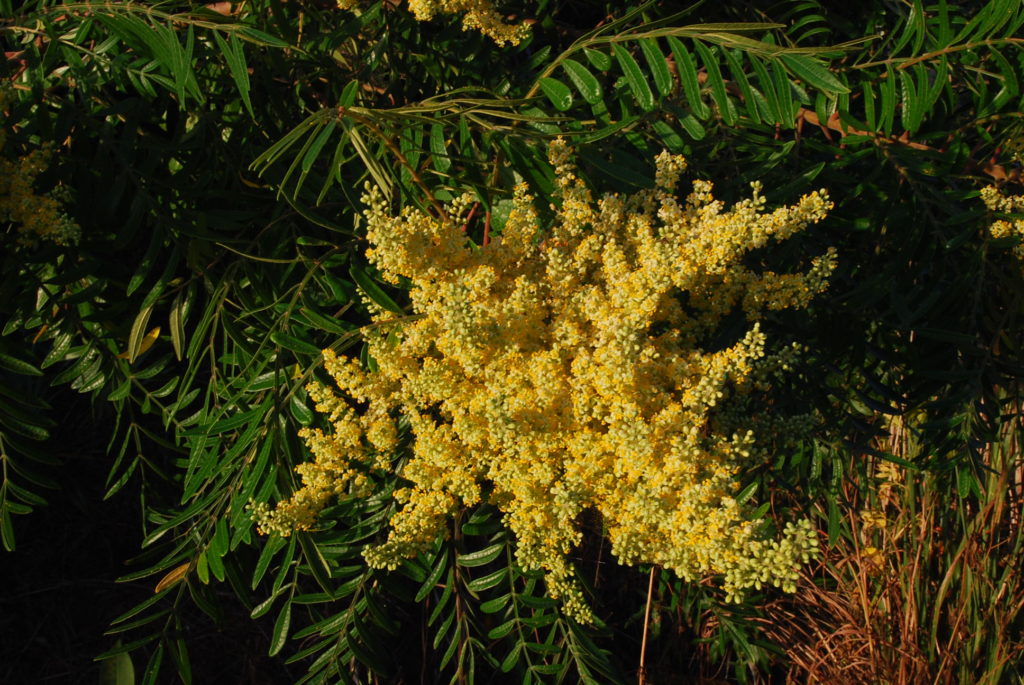

Winged Sumac
Rhus copallinum
Winged Sumac is found in mesic (moist) pinelands and the coast from the Keys throughout the Eastern and Central U.S.. The height is usually 15 feet or less, yet may reach 30 feet. Very tolerant of drought and small amounts of salt air, yet not tolerant of salt water flooding. Short periods of freshwater flooding are tolerated.
Unfortunately Winged Sumac sends out suckers far from the parent plant. Best if grown as a colony under slash pine and given room to wander. The plants are dioecious, so plant several if you want the red berries which follow interesting white masses of flowers that attract many butterflies and bees.
A lemonade flavored drink can be made by rubbing the red berries in some water, straining and adding sugar to the reddish water. This covering contains malic (unripe apple) acid which is what makes Sweet Tarts taste sour.
Plant a mass to fill up a large bare area of the yard or along a wall or side of the house. Winged Sumac will rise above Saw Palmetto and other low shrubs in a pineland, pine rockland or coastal setting. This is a larval food for the red-banded hairstreak.
If suckers are removed periodically, a single tree can be formed. In the fall, the leaves turn a beautiful red before falling and leaving the tree bare for February. The light green new growth in the spring is joined by masses of white flowers. These ripen into cones of red seeds on the female plants by late summer.
Plant with Saw Palmetto, Wax Myrtle, Coralbean, Slash Pine, Myrsine, Dahoon Holly, Cocoplum, Beautyberry and any of the other plants of the pine rocklands.
A coastal theme will include plants found on the dune like Saw Palmetto, Wild Coffee, Marlberry, Horizontal Cocoplum, Coralbean, Myrsine, Hercules Club, Scrub Redbay, Wild Lime, Spanish and Simpson Stoppers, Jamaica Caper and Florida Privet.
On a natural dune these are all kept low by high winds, so trimming will keep these plants rounded and full if you live inland.